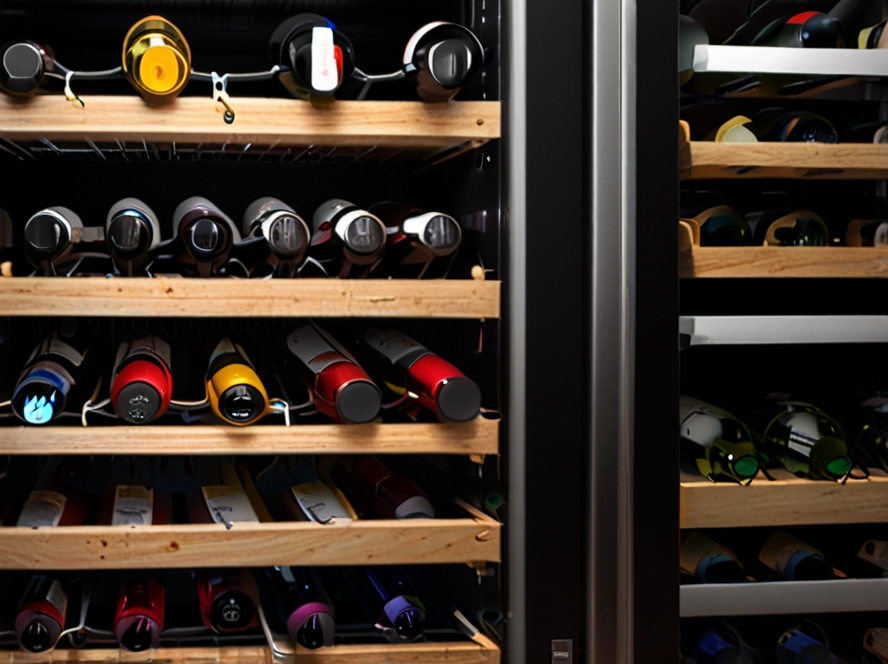Wine refrigerators, also known as wine coolers, are essential for enthusiasts and collectors who wish to preserve their wine in optimal conditions. These specialized refrigerators maintain a consistent temperature, appropriate humidity levels, and adequate ventilation to ensure that wine ages gracefully. However, like all appliances, wine refrigerators can encounter problems, particularly with their humidity and ventilation systems. This article will explore common issues with these systems, their importance in wine storage, and how to address and repair them. Finally, we will guide you on seeking professional help from HOME APPLIANCE SERVICE CENTER for any repair needs.
The Importance of Humidity and Ventilation in Wine Refrigerators
Humidity Control
Proper humidity levels are crucial in a wine refrigerator. Too much humidity can cause mold growth on corks and labels, while too little can dry out corks, allowing air to seep into the bottle and spoil the wine. The ideal humidity range for wine storage is between 50% and 70%.
Ventilation
Good ventilation helps prevent odors from infiltrating the wine and ensures even temperature distribution throughout the refrigerator. Without adequate ventilation, the air can become stale, and temperature inconsistencies may develop, adversely affecting the wine’s quality.
Common Problems with Humidity and Ventilation Systems
Humidity Problems
- Low Humidity: This can occur due to a faulty humidifier, damaged seals, or an improper setting on the refrigerator.
⠀
- High Humidity: Excess humidity might result from an overactive humidifier, poor ventilation, or external environmental factors.
⠀
Ventilation Problems
⠀
- Blocked Vents: Dust, debris, or improper placement of wine bottles can block the vents, disrupting airflow.
⠀
- Fan Malfunctions: The fans responsible for circulating air within the refrigerator can fail, leading to uneven temperatures and humidity levels.
⠀
- Sealing Issues: Damaged or worn-out seals can let in external air, affecting the internal environment of the refrigerator.
Identifying Humidity and Ventilation Issues
Symptoms of Humidity Problems
– Mold or Mildew: Visible mold on bottles or the interior of the refrigerator indicates high humidity.
– Dry Corks: Brittle or shrunken corks suggest low humidity.
– Foggy Glass Door: Condensation on the door indicates excessive humidity.
Symptoms of Ventilation Problems
– Uneven Cooling: Some areas of the refrigerator being warmer or cooler than others.
– Strange Odors: Stale or off smells inside the refrigerator.
– Noise: Unusual noises from the fans or other ventilation components.
Steps to Repair Humidity and Ventilation Systems
Diagnosing the Problem
- Inspect the Seals: Check the door seals for cracks or wear. Replace them if they are not creating a tight seal.
⠀
- Check the Humidifier: Ensure the humidifier is functioning correctly and set to the appropriate level.
⠀
- Clean the Vents: Regularly clean the vents to ensure they are not blocked by dust or debris.
⠀
- Inspect the Fans: Listen for unusual noises and check if the fans are running smoothly.
Performing Repairs
- Replacing Seals: Purchase replacement seals specific to your refrigerator model. Remove the old seals and attach the new ones, ensuring a tight fit.
⠀
- Humidifier Maintenance: If the humidifier is malfunctioning, clean or replace the filter. Ensure it is filled with distilled water to avoid mineral buildup.
⠀
- Vent and Fan Cleaning: Unplug the refrigerator before cleaning. Use a vacuum or compressed air to remove dust from the vents and fans. If a fan is broken, it may need to be replaced by a professional.
⠀
- Repositioning Bottles: Ensure that bottles are not blocking the vents. Proper bottle placement can enhance airflow and maintain consistent temperatures.
Preventive Maintenance
To avoid future problems with your wine refrigerator’s humidity and ventilation systems:
– Regular Cleaning: Clean the interior, vents, and fans regularly.
– Monitor Humidity Levels: Use a hygrometer to keep track of humidity levels inside the refrigerator.
– Check Seals: Periodically inspect door seals and replace them as needed.
– Professional Inspections: Have a professional inspect your refrigerator annually to catch potential issues early.
While some minor repairs and maintenance can be done by the owner, certain issues require professional expertise. Complex problems with the humidifier, fan replacements, or electronic controls are best handled by trained technicians.
Maintaining the humidity and ventilation systems in your wine refrigerator is essential for preserving the quality and longevity of your wine collection. Identifying and addressing problems early can save you time, money, and the disappointment of spoiled wine.
If you encounter issues that you cannot resolve on your own, it’s time to seek professional help. HOME APPLIANCE SERVICE CENTER offers expert repair services for wine refrigerators. Our experienced technicians are equipped to diagnose and fix any problems with your refrigerator’s humidity and ventilation systems, ensuring your wine is stored in optimal conditions. Don’t let appliance issues ruin your collection contact HOME APPLIANCE SERVICE CENTER today for reliable and efficient repair services.
Contact us
 619-928-5000
619-928-5000  Request Service
Request Service 
